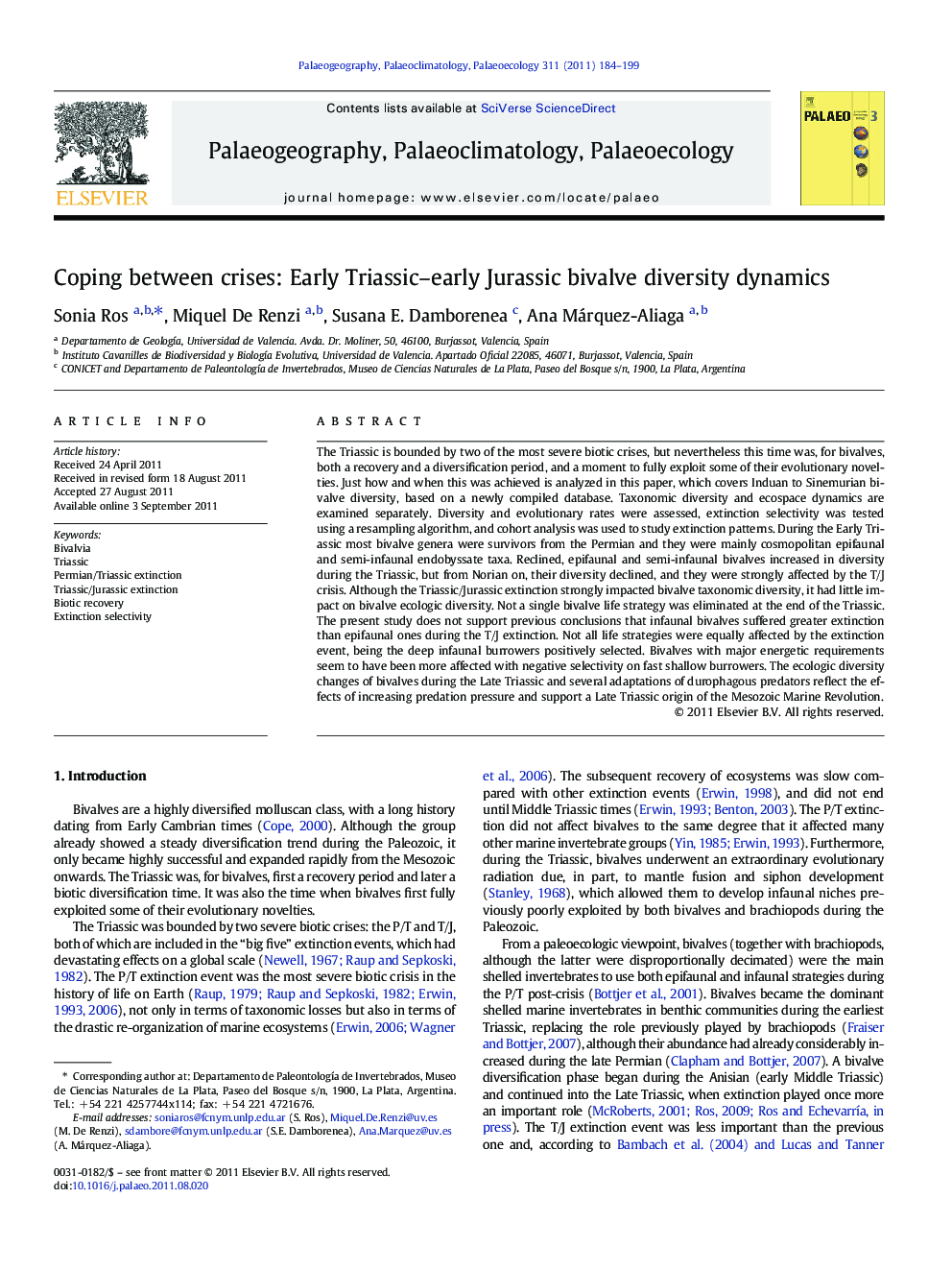| Article ID | Journal | Published Year | Pages | File Type |
|---|---|---|---|---|
| 4467065 | Palaeogeography, Palaeoclimatology, Palaeoecology | 2011 | 16 Pages |
The Triassic is bounded by two of the most severe biotic crises, but nevertheless this time was, for bivalves, both a recovery and a diversification period, and a moment to fully exploit some of their evolutionary novelties. Just how and when this was achieved is analyzed in this paper, which covers Induan to Sinemurian bivalve diversity, based on a newly compiled database. Taxonomic diversity and ecospace dynamics are examined separately. Diversity and evolutionary rates were assessed, extinction selectivity was tested using a resampling algorithm, and cohort analysis was used to study extinction patterns. During the Early Triassic most bivalve genera were survivors from the Permian and they were mainly cosmopolitan epifaunal and semi-infaunal endobyssate taxa. Reclined, epifaunal and semi-infaunal bivalves increased in diversity during the Triassic, but from Norian on, their diversity declined, and they were strongly affected by the T/J crisis. Although the Triassic/Jurassic extinction strongly impacted bivalve taxonomic diversity, it had little impact on bivalve ecologic diversity. Not a single bivalve life strategy was eliminated at the end of the Triassic. The present study does not support previous conclusions that infaunal bivalves suffered greater extinction than epifaunal ones during the T/J extinction. Not all life strategies were equally affected by the extinction event, being the deep infaunal burrowers positively selected. Bivalves with major energetic requirements seem to have been more affected with negative selectivity on fast shallow burrowers. The ecologic diversity changes of bivalves during the Late Triassic and several adaptations of durophagous predators reflect the effects of increasing predation pressure and support a Late Triassic origin of the Mesozoic Marine Revolution.
► Bivalves recovered but also diversified between P/T and T/J biotic crises. ► Infaunalization was suddenly improved for bivalves in the Late Triassic. ► T/J had strong taxonomic but little ecologic impact, tiering was not affected. ► Deep infaunal burrowers were positively selected after T/J event. ► P/T & T/J recoveries differed: generalist taxa after P/T, greater diversity after T/J.
